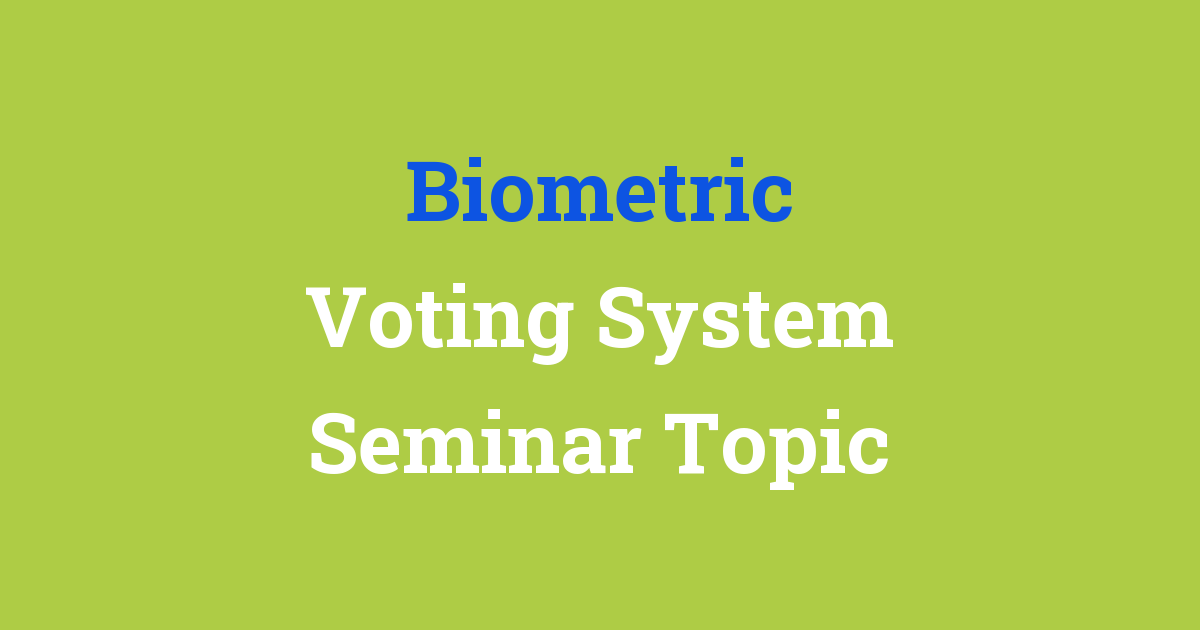Seminar topic on biometric voting system: Enhancing election security through advanced identification technology.
Biometric Voting System Seminar Topic
Introduction
Welcome to my academic project report on the topic of Biometric Voting System. In this report, we will discuss the existing voting system, its drawbacks, and propose a new and improved biometric voting system. With the rapid advancements in technology, it is essential to modernize our voting system to ensure fair, secure, and accurate elections.
Problem Statement
The traditional voting system is prone to various issues such as voter fraud, ballot tampering, and inaccuracies in vote counting. These issues raise concerns about the credibility and integrity of the election process. To address these challenges, there is a need for a more reliable and secure voting system that can eliminate these vulnerabilities.
Existing System
The existing voting system typically involves paper ballots or electronic voting machines. However, these systems have significant drawbacks. Paper ballots are susceptible to fraud and manipulation, while electronic voting machines are vulnerable to hacking and technical malfunctions. Additionally, verifying the identity of voters is a challenge in the current system, leading to instances of voter impersonation and multiple voting.
Disadvantages
- Lack of security and integrity in the voting process
- Voter fraud and ballot tampering
- Inaccuracies in vote counting
- Difficulty in verifying the identity of voters
- Vulnerability to hacking and technical malfunctions
Proposed System
The proposed biometric voting system aims to address the shortcomings of the existing voting system by incorporating biometric technology. Biometric data such as fingerprint, iris scan, or facial recognition can be used to verify the identity of voters and prevent instances of fraud or impersonation. By linking each voter’s biometric data to their voter registration record, the system can ensure that only eligible voters cast their votes.
Advantages
- Enhanced security and integrity in the voting process
- Prevention of voter fraud and ballot tampering
- Accurate and reliable vote counting
- Efficient verification of voter identity
- Resistance to hacking and tampering
Features
The biometric voting system will include the following key features:
- Biometric data capture devices at polling stations for voter authentication
- Secure database for storing biometric data and voter registration records
- Real-time validation of voter identity to prevent fraud
- Encryption and security measures to protect voter data
- Audit trail for tracking and verifying votes cast
Conclusion
In conclusion, the implementation of a biometric voting system offers a more secure, reliable, and efficient way of conducting elections. By leveraging biometric technology, we can enhance the integrity of the voting process and safeguard against fraud and tampering. It is imperative for governments to consider adopting biometric voting systems to uphold the principles of democracy and ensure fair and transparent elections.

